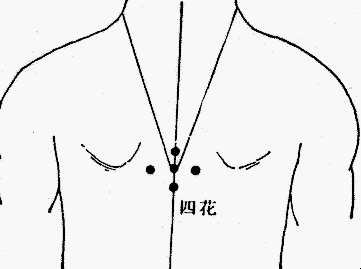| acupoint | Sihua |
extra point.
bubble_chart Etymology
There are four acupuncture points on the back, which are often used for moxibustion. During treatment, the four acupoints are on fire at the same time, like four brilliant red flowers, hence the name Four Flowers.

In the sacrospinal muscle and latissimus dorsi muscle, there are the posterior branches of the seventh to tenth thoracic nerves, and the medial branches of the dorsal branches of the seventh to tenth intercostal arteries and veins.
Moxibustion with moxa cone 7 to 15 years old.
pulmonary tuberculosis, cough, asthma, weakness and weight loss.
- Cough and asthma: Sihua, Dazhui (GV14), Feishu (BL13).
- Weakness and thinness: Sihua (moxibustion), Zhongwan (CV12), Pishu (BL20), Zusanli (ST36 ).
The Sihua point comes from Guzhengbing Jiufang and is the method of Cui Zhi-ti pulmonary tuberculosis. Waitai Miyao Volume 13, Sushen Liangfang Volume 1, Zhenjiu Daquan Volume 1 This law is consistent with the law contained in Guzhengbing Jiufang Lost. The acupoint selection rules in Volume 3 of Zisheng Jing are different from this, and are collected by Zhenjiu Juying and Zhenjiu Dacheng.




